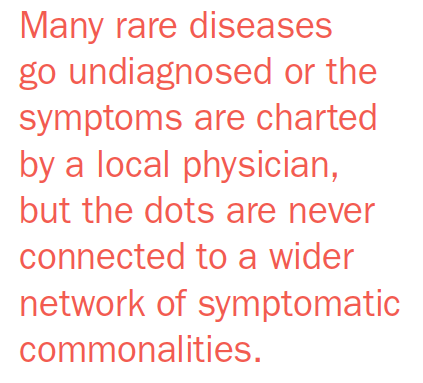Finding Patient X: The Role of Digital Media in Rare Disease Research
Applied Clinical Trials
Digital media is becoming a crucial vehicle for finding “Patient X” for rare disease drug trials. Three areas in particular where digital media is helping with the detective work are explored.
The market viability of orphan drugs-pharmaceuticals targeting rare diseases and disorders-has gained significant traction in recent years, generally from the lack of competition and high financial rewards. However, the risk is significant and finding patients to monetize the investment makes it a precarious business. What we know for certain is that orphan drugs are marketed from a notably different playbook and cribbing from mainstream pharma campaigns strategies will earn little tactical benefit. We also know that 95% of orphan diseases do not have a single FDA-approved drug treatment. Many rare diseases go undiagnosed or the symptoms are charted by a local physician, but the dots are never connected to a wider network of symptomatic commonalities that link one undiagnosed “Patient X” with the next.

For marketers promoting a solution, digital media is becoming a crucial vehicle for finding Patient X by casting the widest possible net of information with pinpoint targeting. Given the detective work needed to identify these people, here are some areas where digital media is helping.
Optimizing awareness campaigns
Doctors sit atop the patient pyramid along with related caregivers, lab technicians, and nurses. Reaching them is crucial as they may often be the only professional advisors in Patient X’s life. As orphan drug marketers search for Patient X, digital media campaigns are able to successfully target and influence caregiver populations with educational and diagnostic information. While most doctors don’t sit behind a desk and are forbidden by HIPAA regulations from communicating via common email channels, reaching them on-the-go via mobile devices and in social situations is key; doctors love mobile devices and sharing ideas in closed, social forums with other doctors.
With its extended reach and targeting capabilities, digital media-including display ads, pay-per-click, and social ads-can help marketers distribute and popularize diagnostic information across the Web, quickly. It can attract an audience and direct them to areas where doctors commonly seek advisory and research information, such as online forums, and private networks such as Sermo and Aptus Health, which serve pharma marketers by publishing clinical resources.
Search semantics reveal symptoms
Patient X has a tremendous thirst for knowledge about their illness and may search high and low for information on the furthest reaches of the Web, particularly outside the medical community. The search semantics they use on Google or in-app search devices reveal their symptoms as keywords and long-tail combinations of keywords such as “abdominal pain in the morning” or “persistent low fever for days.” By incorporating these keyword semantics, digital ad campaigns can find and lead Patient X to support groups within the rare disease community or to educational repositories established by drug marketers. Marketers may establish help forums or online communities as a destination for their digital media outreach, leading Patient X to a safe place where they can be discovered by the orphan drug manufacturer.
Where social media can help
The wide net of social media has been successful in finding clinical study participants and disease state communities, beyond geographic boundaries and outside the reach of local research centers. However, a report from the FDA raised issues concerning the demographics of most clinical studies. The agency’s research indicated that clinical trial participants were 74% Caucasian, which creates a critical issue of racial imbalance in the trial. The report indicated some extreme cases where whites made up 90% or more of participants. In cases where diversity is key to the results, social media-which has its own largely female demographics-may tip the scales if not properly targeted. Deep targeting tools within social platforms can accomplish this, but the “casting-a-wide-net” approach may need to evolve to a more tactical strategy to ensure balanced demographics.

Lori Goldberg is CEO of Silverlight Digital.
